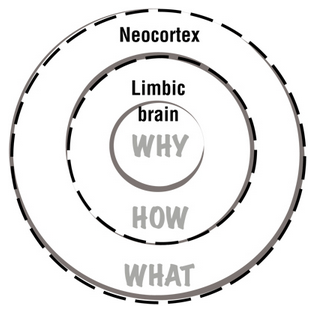I recently re watched the inspiring Ted Talk from Simon Sinek on how great leaders inspire.
Simon talks about the notion of a golden circle or 3 concentric circles. At the centre, is ‘why’ – the emotion or purpose of why you do what you do (or why a business does what it does). Next out is ‘how’ and the outer circle is ‘what’. Customers buy from the inside out based on the why first, then how and what. Businesses however, sell and communicate from the outside in which is why they often fail in their approach.
They’re very good at telling you what they do and how they do it, but not very articulate (if at all) about why they do what they do. The really important bit that customers really buy and that makes a significant difference between businesses in terms of their success.
Therein lies an often over looked paradox in relation to customers and customer experience.
Businesses want customers to be loyal. Loyalty, as is commonly known drives recommendation, referral and repeat business (Harvard’s 3Rs model). Businesses also want the beholden golden goose of customer trust. The unquestioning kind where customers stay loyal despite challenges and issues because they believe in a brand or business.
These appear to be at first glance rational needs (the what and the how) and requirements from a business perspective but they are not.
Decisions around loyalty and trust come from emotion (the why). Emotion comes from the very oldest and fastest part our brains (as opposed to the more recent neocortex). It’s a part called the limbic system where arguably our intuition and gut feel also stems from. It’s the part of the brain that drives us towards pleasure and away from pain and pretty much kept us alive in prehistoric times.
Customers act loyal (or trust) based on how they feel first then how they think second by rationalising their decisions. Few people realise this as it contradicts the classic economic theory as first mentioned by Adam Smith in his publication The Wealth of Nations. His idea (now largely debunked yet not widely believed) was that we are all rational decision makers most of the time and that we act only in our own self interest, balancing up costs and benefits before making a decision. In fact, the very reverse is true.
Most, if not all of the time we are emotional decision makers who then rationalise our decisions to avoid believing we made a bad or poor decision in the first place. We also look for supporting evidence to back up our decisions, so we further believe we made the right choice (see the brilliant book ‘Predictably Irrational by the equally brilliant Dan Ariely).
Business (in the main) acts and communicates in the opposing direction to how customers act, by delivering and expecting rational acts (customers buying on features and benefits as an example) to evoke emotion in customers (hopefully positive but often negative!) in order that they’ll buy a product or service.
Emotion is always evoked so that’s definitely a successful outcome delivered. However, in the majority of cases it’s apathy from the customer’s perspective (think financial services and products like pensions), or unless you’re Apple, Disney or Zappos who excel at creating positive emotion. Alternatively it’s frustration or anger that’s generated especially if you’re Ryan Air or npower.
So there’s a lot to be gained by starting at the ‘why’ in business before moving to the ‘how’ and ‘what’ given that’s how customers function but it’s either not done often enough or it’s not done very well. Starting at the ‘why’ in relation to anything customer related is going to be a more positive experience for everyone involved.
‘Why’ moves people to act. ‘Why’ can be a powerful, purposeful story that evokes unstoppable emotion and that lasts. It also builds trust and loyalty and that’s what customers really want; not features and benefits.
So what’s your why?



